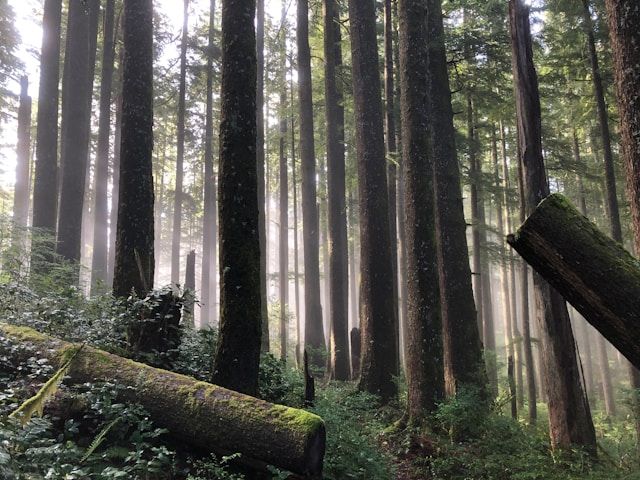UK scientists uncover fossilized forest unlike any seen today, dating back over 358 million years
In a groundbreaking study, researchers from the United Kingdom have stumbled upon what is now considered the world’s oldest fossilized forest. Found on the rugged cliff sides of Minehead, off the Somerset coast in England, this prehistoric marvel dates back between 419 million and 358 million years. This discovery, a collaboration between the Universities of Cambridge and Cardiff, opens new doors to understanding early planetary life.
The ancient forest was predominantly composed of Calamophyton trees, precursors to the modern-day palm trees. Unlike their descendants, these trees boasted twig-like structures instead of leaves and featured hollow trunks. With heights ranging from two to four meters (approximately 6.5 to 13 feet), the Calamophyton trees played a crucial role in their ecosystem, shedding twigs that provided habitats for various invertebrates on the forest floor.
Professor Neil Davies, from Cambridge’s Department of Earth Sciences, described the site as “a pretty weird forest” that bears little resemblance to the forests we see today. “There wasn’t any undergrowth to speak of, and grass hadn’t yet appeared. However, the landscape was heavily influenced by the densely packed trees and their fallen twigs,” he noted.
This ancient forest, located on the south bank of the Bristol Channel, highlights how early trees contributed to stabilizing riverbanks and coastlines, marking a significant phase in Earth’s ecological development. According to Davies, “The fossils encapsulate a pivotal moment when rivers began to function differently, becoming the powerful erosive forces we recognize today.”
Previously, the title for the world’s oldest fossilized forest was held by a site in New York, with a 386 million-year-old forest featuring Cladoxylopsids and Archaeopteris trees. These forests, thriving during the Devonian period, were crucial in the transition of life from water to land, offering safe havens for emerging land animals.
Today’s forests, home to a vast biodiversity including 60,000 tree species, continue to play a vital role in sustaining life on Earth. They not only provide habitat for a majority of the world’s terrestrial species but also combat human-induced pollution by absorbing harmful gases and releasing clean oxygen. This emphasizes the ongoing importance of forests and the necessity of supporting sustainable practices to prevent deforestation, especially in industries like agriculture that are major contributors to land clearance.
The discovery of the world’s oldest fossilized forest in England not only enriches our understanding of prehistoric life but also serves as a reminder of the enduring significance of forests in maintaining planetary health and biodiversity.
